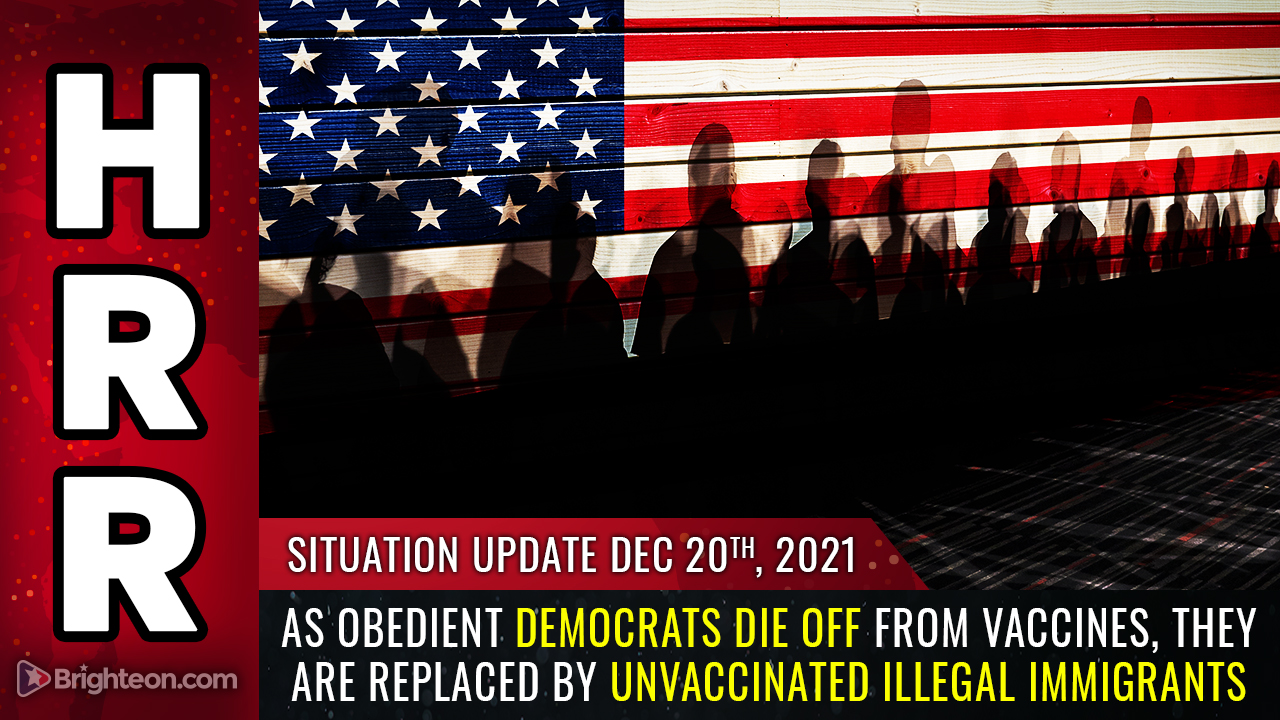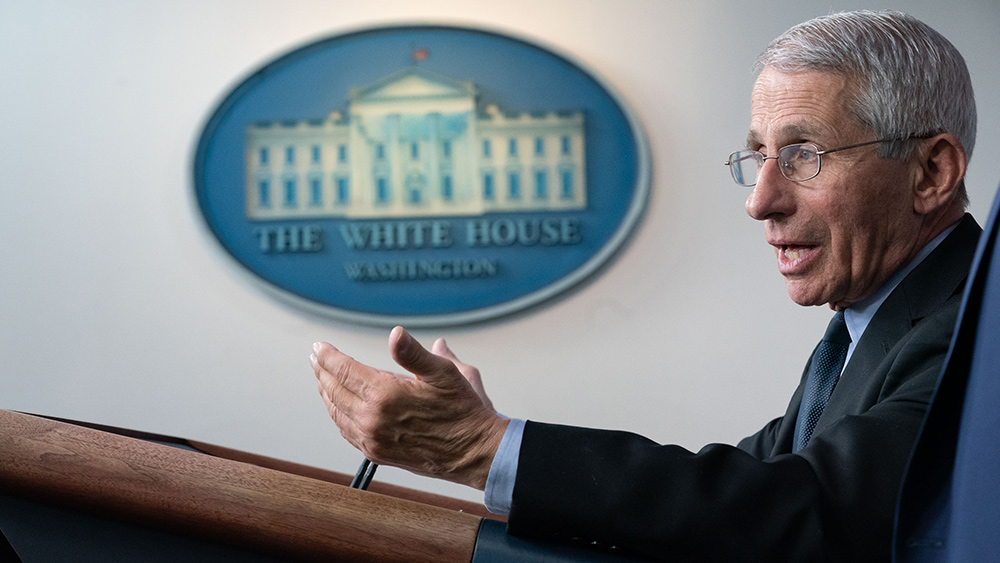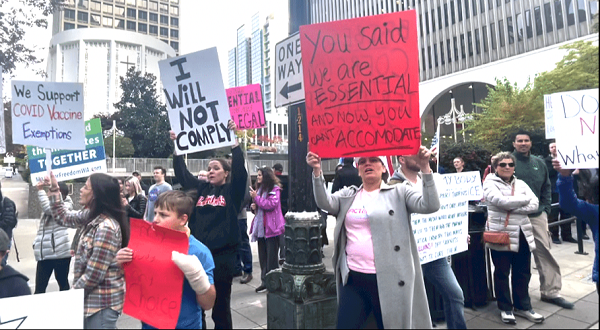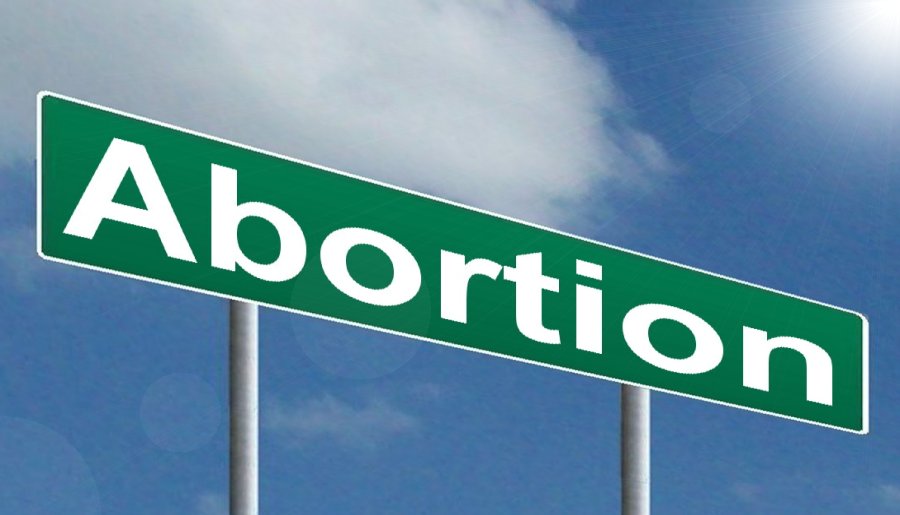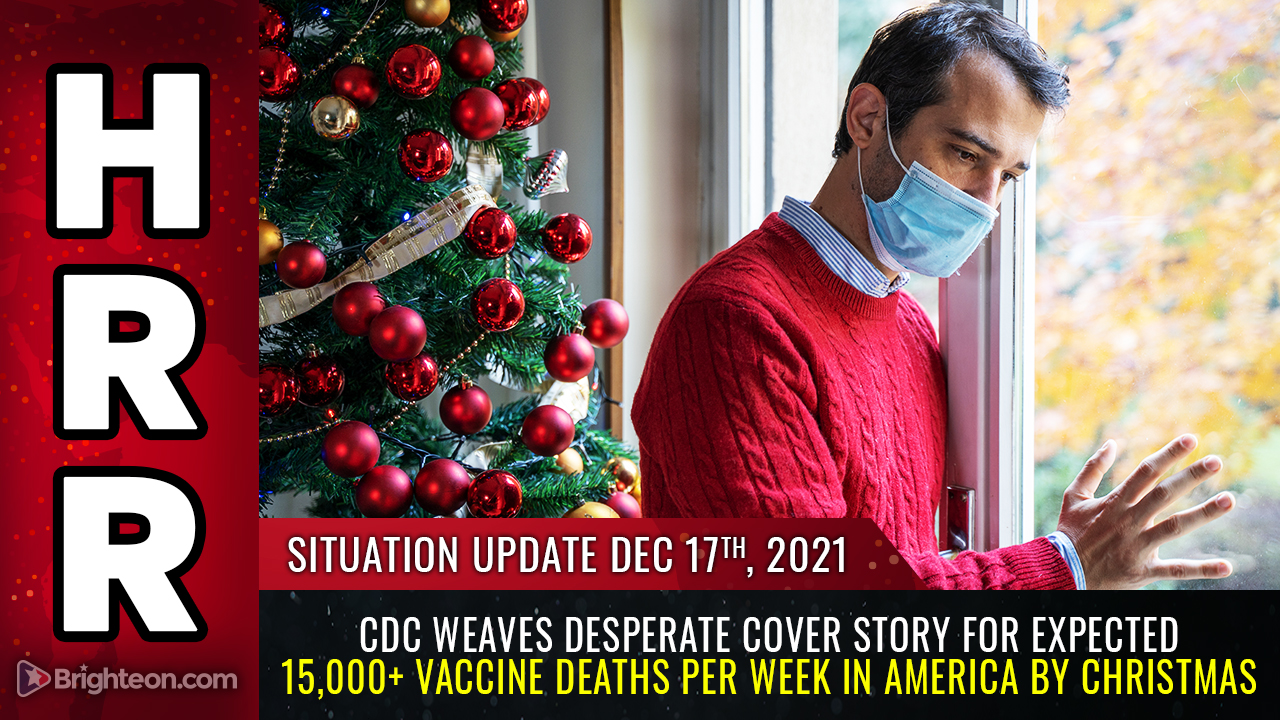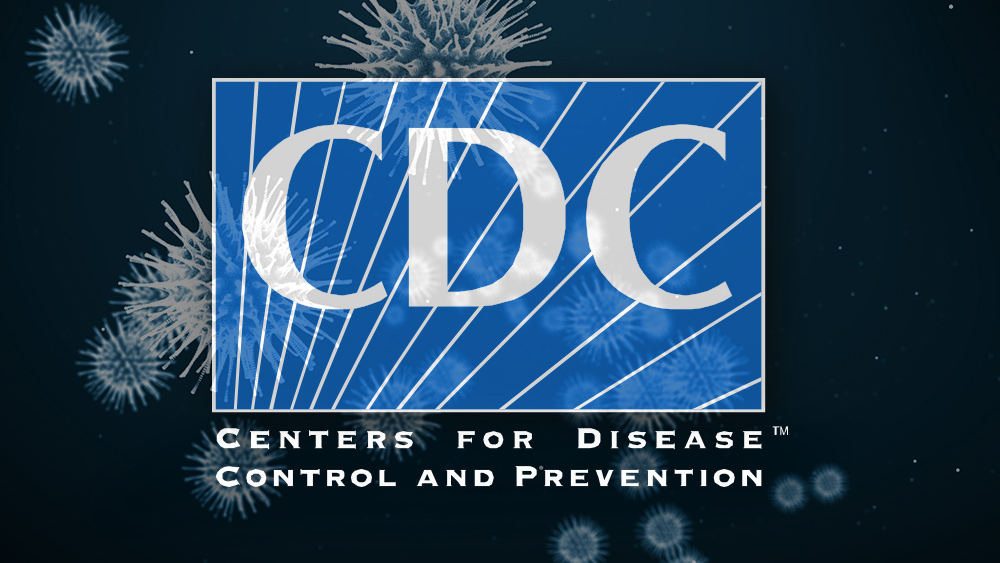Gaslighting, a Covid love story
08/23/2021 / By News Editors
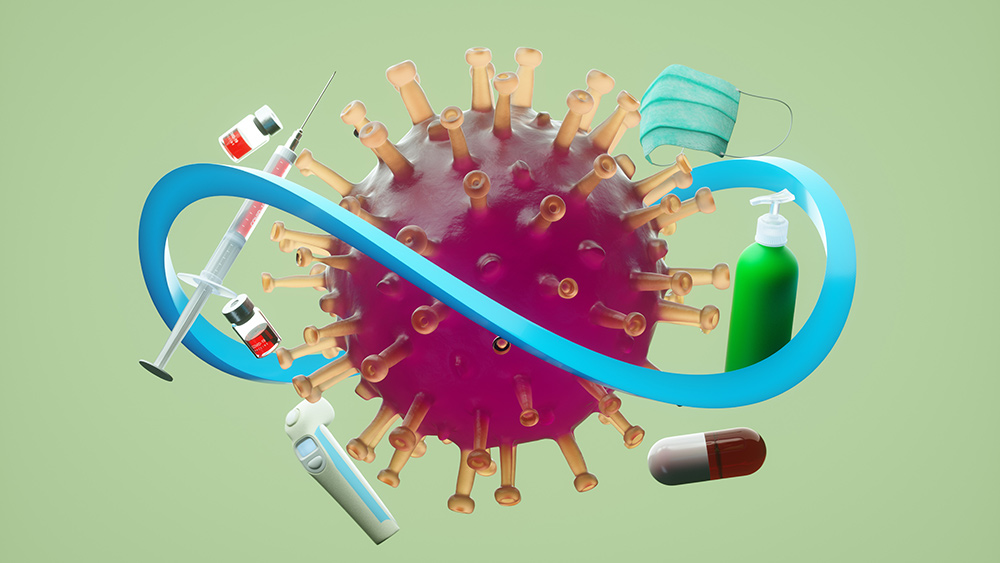
I’m old enough to remember when vaccines were the miracle that would put Covid behind us.
(Article by Alex Berenson republished from AlexBerenson.Substack.com)
So are you.
It less than six months ago.
From January through May, as the vaccine rollout ramped up, public health experts and reporters insisted the main question about vaccines was just how fast they would get the United States back to normal.
Israel and Britain were the envy of the world, at least that part of the world watching CNN. Those countries were the early leaders in mass vaccinations. Authorities and the media desperately hoped the United States could catch up.
“Vaccine Rollout Gives U.K. a Rare Win in the Pandemic,” the New York Times wrote on January 29.
“When will the pandemic end?” Bloomberg asked on February 4. “The answer can be measured in vaccinations.”
“What life is like in countries where Covid-19 vaccination is increasingly a success,” CNN added on February 25.
—
Maybe the most explicit example of this equation came on February 20, the New York Times ran an article and graphics showing when the United States might reach “herd immunity” against Covid.
Herd immunity essentially means that although Sars-Cov-2 (or any pathogen) may still exist and sometimes sicken people, major outbreaks will not occur, because so many people are immune that the disease cannot spread widely.
As the Mayo Clinic explains:
“Herd immunity occurs when a large portion of a community (the herd) becomes immune to a disease, making the spread of disease from person to person unlikely.”
The Times piece was headlined, “When Could The United States Reach Herd Immunity? It’s Complicated.”
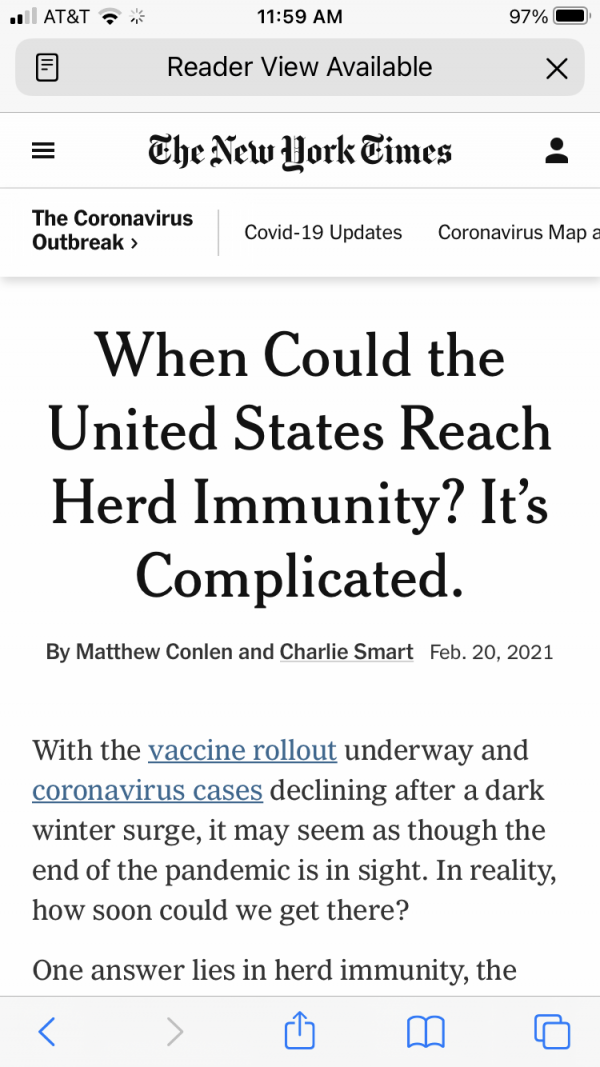
—
In fact, though, the answer the piece offered was simple.
It went like this: The more aggressively the United States accelerated its vaccine rollout, the faster it would reach herd immunity.
At the time, about 1.7 million Americans a day were being vaccinated. The Times suggested if the United States raised that number to 3 million, it would reach herd immunity in May, when roughly 40 percent of the population was fully vaccinated and 30 percent more had immunity from a previous infection.
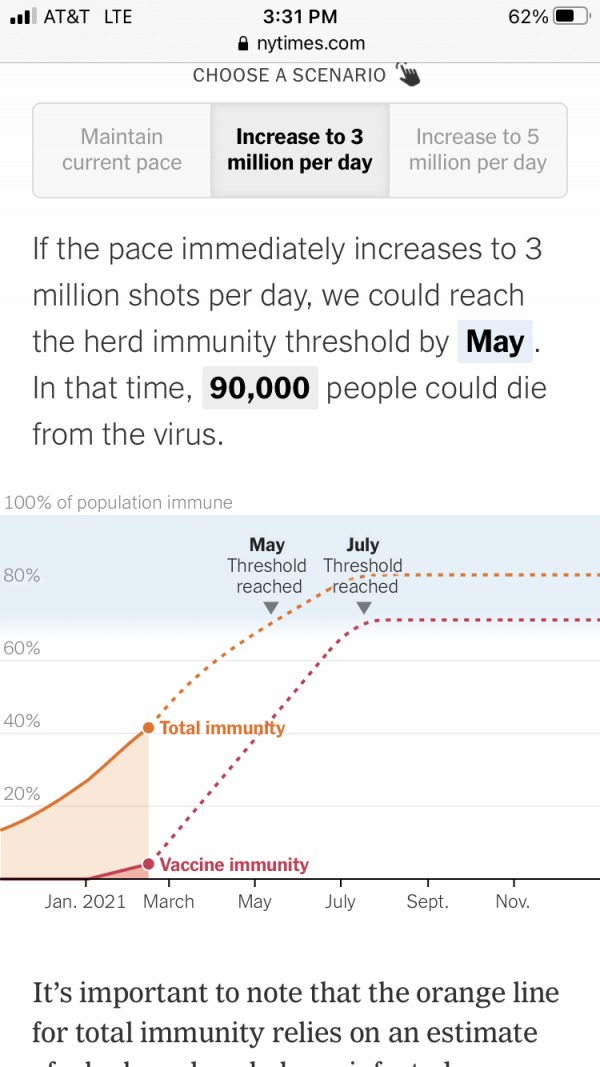
The Times was clear about what assumptions underlay the model, writing, “the estimates also assume that the vaccine prevents infection.”
And the United States did accelerate its vaccinations, which peaked at 4.6 million on April 10th. The seven-day average was over 3 million for most of April. It began to slide in the middle of the month after federal regulators paused use of the Johnson & Johnson vaccine after reports it could cause serious blood clots.
Still, by May 20, more than 135 million Americans had been fully vaccinated – meeting the 40 percent threshold the Times had set three months before. (The number currently stands at about 167 million, just over half of all Americans, since vaccinations have slowed dramatically since May despite government and business pressure.)
—
The Times and other media outlets did not come up with those estimates and articles on their own. They echoed the view of public health experts – including Dr. Anthony Fauci – who were also very optimistic, and also explicitly tied the effective end of the epidemic to vaccination rates.
For example, in a December interview with NPR, Fauci predicted that once 50 percent of Americans were fully vaccinated, “you start to see an impact.” His estimates for the level of vaccinations required to reach herd immunity were higher, generally from 70 to 85 percent of the population, and rose slowly over time.
But in an interview just before Christmas with the Times, Fauci explained he had raised his estimates mainly because the virus was more contagious than initially thought. The more contagious the pathogen, the more people who must be immune – either through effective vaccination or because they have been infected and recovered naturally – to stop a case from turning into an outbreak.
Other experts went further.
“What we see is that immunity conferred by the vaccine can essentially completely limit the breakout of any infections in the population,” Galit Alter, a Harvard immunologist and virologist, said on Feb. 25.
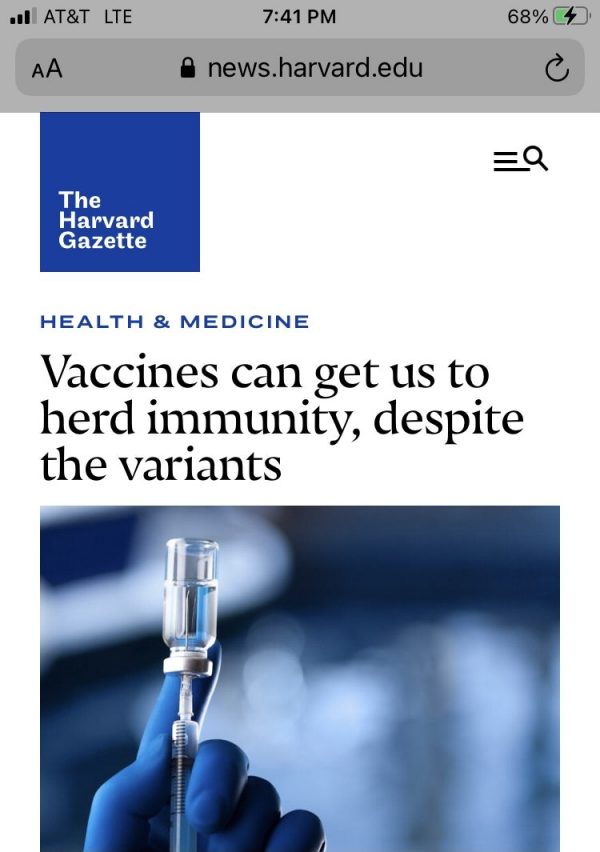
—
As winter turned to spring, and cases in Israel and the United Kingdom dropped to close to zero – with hospitalizations falling even further – vaccine advocates became even cockier.
On March 29, the CDC reported that the Pfizer and Moderna vaccines reduced infections by 90 percent. “The findings provide researchers with more evidence that vaccines reduce the risk of infections, including asymptomatic ones,” Axios wrote.
On April 28, Dr. Ugur Sahin – the chief executive of BioNTech, the German company that developed the mRNA vaccine Pfizer markets, said he expected European countries to reach herd immunity by July or August.
Sahin “cited studies from Israel, which shares medical data on its vaccination campaign with Pfizer, showing that people who have been immunized rarely fall seriously ill and are significantly less likely to transmit the virus to others.”
(Link to story here: https://apnews.com/article/europe-north-america-immunizations-coronavirus-pandemic-coronavirus-vaccine-f1eca91561f3a1be9550b79534b17741)
Though Sahin said he expected boosters might eventually be needed, he framed them more as a topping-up to return vaccinated people to near-full protection than a desperation measure. And he specifically said he expected the vaccine would work against the Delta variant.
“The Indian [Delta] variant has mutations that we have previously investigated and against which our vaccine also works, so I am confident there, too.”
Similarly, on May 10, the Los Angeles Times confidently predicted:
L.A. County expected to hit COVID-19 herd immunity by end of July
As soon as 80 percent of people over 16 – or roughly 65 percent of the total population – were fully vaccinated, Los Angeles could expect herd immunity, the paper wrote. “The prediction comes amid growing signs COVID-19 is fading in California.”
Health officials in San Francisco – where vaccination rates were even higher – agreed, and even said they expected to reach herd immunity first.
—
Perhaps most stunningly, during an April 28 interview with the TODAY show, Fauci spoke out against Joe Rogan, the popular podcast host. Rogan had said he didn’t think young people needed vaccinations because they were at low risk from the coronavirus.
Fauci didn’t disagree about the risk. But he said young people needed to be vaccinated anyway because “you can get infected [if you are not]… and even if you don’t have symptoms, you are propagating the outbreak because it is likely that you, even if you have no symptoms, you are inadvertently and innocently then infect someone else… if you want to only worry about yourself and not society, then that’s okay.”
But Fauci’s logic only made sense if vaccines would eliminate or nearly eliminate the risk of infection and transmission even in people at low risk from the virus itself.
That message was very clearly what he implied.
—
Now, barely three months later, the promises of herd immunity have NOT come to pass. Cases in the United States are soaring. Hospitalizations and deaths are also rising.
Throughout July and August, vaccine advocates have tried to blame these trends on fact that the United States has not hit the vaccine benchmarks they hoped. They have incorrectly called this current outbreak a pandemic of the unvaccinated.
That argument has one problem. Israel and Britain – which have essentially reached the vaccination levels that advocates promised were necessary for herd immunity – are having even worse outbreaks this summer.
In Israel, 60 percent of the entire population and 80 percent of adults are fully vaccinated. In Britain, almost 90 percent of adults have received at least one dose and 76 percent have received both.
Yet positive tests and serious hospitalizations in Israel have risen 20-fold since early July. Hospitalized patients and patients on ventilators in Britain have risen sevenfold since early June and are far higher than this time last year.
It is still not entirely clear whether the vaccines are failing because of the decrease over time in the antibodies they generate, because the Delta variant is able to elude those antibodies, or some other reason.
But what is now clear is that vaccinated people are at high risk both to be infected and to transmit the virus to others. The Centers for Disease Control acknowledged this fact on July 27, when it once again told them they should wear masks in many situations.
The new recommendation followed a large outbreak of Covid cases in early July in Provincetown, Massachusetts, in which 74 percent of infected people were fully vaccinated, as well as evidence that infected people have equally high viral loads whether or not they are vaccinated.
—
Now vaccine advocates have done a massive about-face. In the face of this horrendous data, they have simply refused to admit the vaccines are failing to work as they promised.
They don’t ever even acknowledge that months ago, they said vaccines would sharply reduce coronavirus infections and transmission.
No. Instead they insist that the vaccines are working just as advertised, by sharply reducing serious illness and death.
“Don’t Lose Sight of the Fact That Covid Vaccines Are Working,” Bloomberg News wrote on Friday.
“Doctor says COVID-19 vaccines are ‘working phenomenally well,'” CBS News reported in early August.
“Our vaccines are working exceptionally well,” Dr. Rochelle Walensky, the director the CDC, told CNN on August 6. “They continue to work well for Delta, with regard to severe illness and death — they prevent it.”
It is astonishing Walensky made that statement, which is ABSOLUTELY FALSE. In both Israel and Britain, most deaths are in fully vaccinated people.
—
Put aside the fact that the Israeli and to a lesser extent British data have now undercut the claims that the vaccines reduce the risk of hospitalization or death by 95 percent, much less 97 or 99 percent, as vaccine advocates have claimed.
Put aside that a very worrisome paper in the Journal of Infection on August 9th suggested a risk of what is called “antibody dependent enhancement” in vaccinated people infected with the Delta variant (more on this to come in another Stack).
Focus only on the fact that public health advocates and reporters have simply tossed aside what they said only months ago – and that they are now warning that even healthy adults are likely to need booster shots to keep even THIS level of protection going forward.
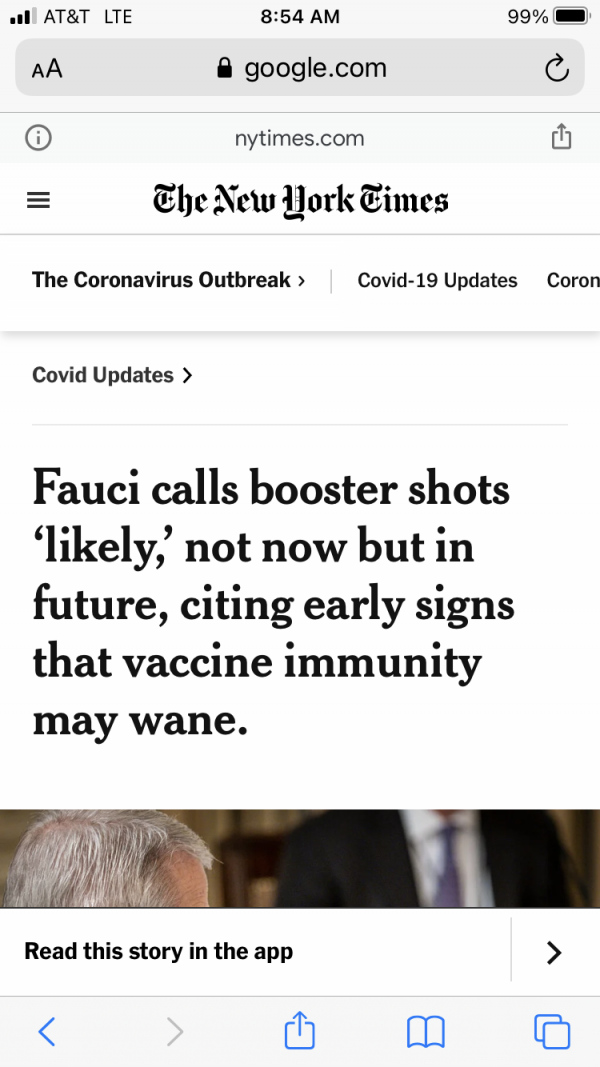
It is beyond clear at this point that vaccines will not just not end Covid, they so far seem to have made at best – at best – a marginal difference in the course of the epidemic.
In fact, to look at Israel’s experience against that of Lebanon and other neighboring countries with much lower vaccination rates is to wonder if they have done any good at all. (I hope to come back to that question, too, in another Stack.)
It’s okay to be wrong – as public health advocates have been, over and over and over.
It’s not okay to lie about being wrong.
But they can’t help themselves.
Read more at: AlexBerenson.Substack.com
Tagged Under: COVID, Fauci, gaslighting, outbreak, pandemic, vaccine, vaccine wars, vaccines
RECENT NEWS & ARTICLES
MedicalFascism.News is a fact-based public education website published by MedicalFascism News Features, LLC.
All content copyright © 2018 by MedicalFascism News Features, LLC.
Contact Us with Tips or Corrections
All trademarks, registered trademarks and servicemarks mentioned on this site are the property of their respective owners.

